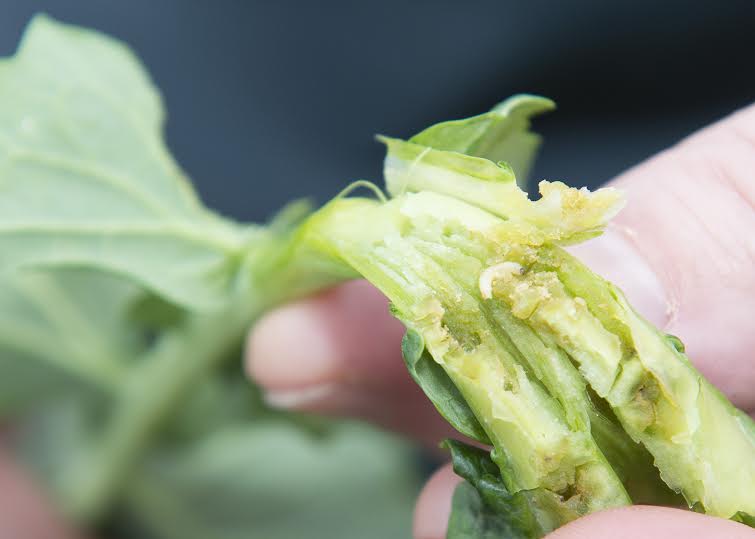
Extreme levels of Cabbage Stem Flea Beetle activity occurring in oilseed rape plants this spring could seriously increase risk for Sclerotinia infection.
Damage to leaf petioles from as the larvae emerge, will leave an easy entry point for disease pathogens to get in.
A two-spray Amistar programme offers growers the best chance to protect crops from Sclerotinia attack, and to help affected plants to compensate for the lost leaf damage.
Although Sclerotinia risk has, so far, been low this season, with cool temperatures through March and early April, there is ample soil moisture for primed apothecia to produce ascospores as soon as soil temperatures rise, warned Syngenta Field Technical Manager, James Southgate.
He highlighted that, hitherto, the relatively weak Sclerotinia pathogen has primarily relied on decaying fallen leaf petal material to generate activity to infect plants.
But physical damage to stems and leaf petioles has also been recognised as potential disease infection points - which has become significantly greater with the high beetle numbers.
"Amistar will provide essential protection from the potential disease risk. Importantly, its highly systemic activity will help assure movement of the fungicide activity to the damage points on the leaf, to prevent infection," he advised.
Furthermore, James pointed out that, with the extensive leaf damage caused by the beetle larvae, it will be more important than ever to protect the remaining green leaf area for as long as possible this season.
"Oilseed rape yields, and the oil content of seed, is driven in the final few weeks of the crop’s life," he said.
"The green leaf retention and prolonged photosynthetic activity stimulated by Amistar treatment will still enable plants to make the best possible results from the remaining healthy leaf area, even if there is no Sclerotinia infection."
Since highly damaging Sclerotinia epidemics have occurred just twice in the past 10 seasons, growers had still made an economic return from Amistar treatment every year through higher yields and greater oil content of seed.
There are also increased warnings of Verticillum Wilt effects on plants stressed by beetle larvae damage this season, where the promotion of oilseed rape green leaf area and healthy plant growth could help to mitigate its effects.
James advocated that an initial Amistar application at early flowering will protect against infection if the Sclerotinia risk rises, with a second application at mid- to late-flowering to bolster the disease protection and maximising the potential for green leaf area retention and yield enhancement.
Pest and disease interaction
Insect pest monitoring results on the Syngenta Innovation Centres and growers’ fields has identified unparalled Cabbage Stem Flea Beetle activity this season.
Where inspections had typically found one affected plant in every 10 to 20 plants for the past two seasons, this year almost every plant has been affected in some crops, usually with multiple larvae in each leaf.
This season, the Syngenta Innovation Centre crops will be further monitored to evaluate any correlation between beetle larvae damage now, and Sclerotinia and Verticillium Wilt infection at harvest, along with the benefits of Amistar application.
Pete Saunders, Syngenta Insecticide Technical Manager, indicated that the initial threat is from the damage to leaf area of this season’s growing crop and the risk of disease infection.
"However, growers must also be aware of the threat to next season’s crop establishment," he warned.
"Our work to manage Cabbage Stem Flea Beetle without neonicotinoid seed treatment highlights the crucial importance of getting crops growing quickly; especially moisture conservation, nutrition, seedbed conditions and drilling technique.
"We have also seen the advantage of hybrid vigour to get crops moving quickly and outgrowing adult beetle feeding damage,” advised Pete.
"We are continuing to monitor the incidence of pyrethroid resistance among Flea Beetle populations and to develop application techniques to optimise spray control, with full rate application of Hallmark Zeon still giving the best results to control susceptible populations."
